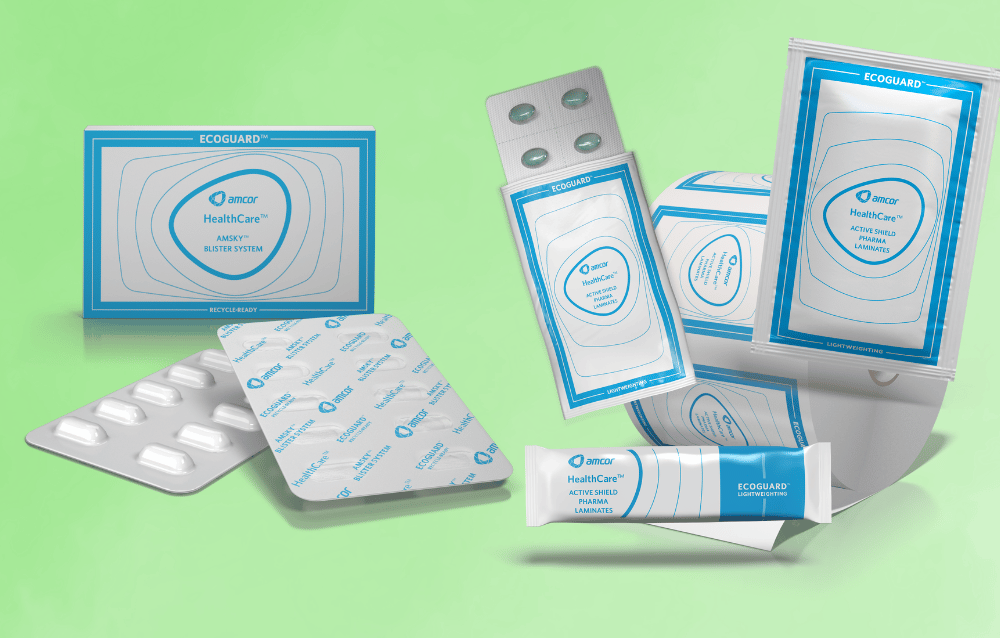Overcoming Key Challenges in Transitioning to Sustainable Pharma Packaging
Pharma
August 30, 2023Reading time: 2 minutes

Sustainability is a top priority across industries and markets, and the healthcare sector is no exception. Pharmaceutical manufacturers face increasing regulatory, competitive, and consumer pressure to adopt responsible packaging practices that reduce waste and environmental impact.
It’s a worthy goal, but it’s also a challenge. Sustainable packaging solutions for pharmaceuticals continue to evolve, and certain regional and global factors currently prohibit consensus on a universal definition. There’s also the need for balance. How can manufacturers reconcile sustainability with financial and logistical goals?
Sustainability Goals in Packaging
Regardless of sector, the push toward more sustainable packaging continues to gain momentum. More than 70% of consumers actively make purchase decisions based upon sustainable packaging considerations.1 Major retailers such as Walmart have implemented policies holding suppliers to sustainable best practices that optimize design, promote sustainable sourcing, and support recycling.
It all points to industries — including pharma — needing to build packaging strategies around goals that reduce waste, improve recyclability, and minimize carbon footprint, including:
- Optimizing package size
- Downgauging materials
- Eliminating unnecessary packaging
- Incorporating more recycle-ready and recyclable materials
- Committing to timely and exclusive use of recyclable or reusable packaging solutions
- Seeking guidance from a trusted healthcare packaging solutions provider
Financial Considerations of Sustainable Pharma Packaging
There is a common misconception that more sustainable packaging is always more expensive than existing packaging options. While there will be some upfront investments in design, materials, and processes during transition to eco-friendly pharmaceutical packaging, costs can typically be contained with the help of an experienced packaging supplier like Amcor.
There is also potential for long-term financial gain in adopting sustainable packaging solutions through:
- Increased consumer appeal, satisfaction, and related purchase decisions
- Lower packaging waste management costs
- Achieving economies of scale once materials and packaging demand align
- Fewer compliance concerns and corrections as regulatory requirements become more stringent
- Greater competitive advantage in thought leadership and packaging innovation
Logistical Considerations of More Sustainable Packaging Implementation
Much like cost, there are myths surrounding logistical implementation of eco-friendly pharmaceutical packaging initiatives. A common belief is that sustainability decisions will cause upheaval of established supply chains, design and production practices, and ultimately compromise product integrity.
The reality is that cultivating a relationship with a packaging expert such as Amcor alleviates logistical concerns. The partnership is central to:
- Ensuring supply chain disruption is minimized due to a strong network of materials suppliers
- Designing packaging to optimized recycling pathways within a facility and geographically
- Testing to validate the proposed more sustainable packaging materials will meet all requirements for the pharmaceutical product
- Complying with regulatory requirements related to packaging and utilizing labeling necessary to implement sustainability initiatives
The Value of Packaging Life Cycle Assessment
Collaborating with a packaging supplier to identify alternative solutions to reduce the carbon footprint of packaging materials provides opportunities to leverage innovations that promote sustainability best practices.
The Amcor ASSET™ life cycle assessment tool gives pharma manufacturers a comprehensive understanding of how and why every life stage of their packaging impacts the environment. ASSET™ objectively evaluates key factors such as solvent reduction and elimination, zero waste to landfill, energy reduction, and water conservation — then provides actionable data for building continuous improvement cycles for reducing carbon footprint.
Sustainable pharma packaging brings with it wide-ranging expectations and considerations for solutions that serve current needs and future challenges. Learn how collaborating with Amcor can help you be a difference-maker for the industry and the planet in Sustainable Packaging for Consumer Health Applications. Click the button below to download your copy!

SOURCE
1PR Newswire, New Data Reveals Consumers Increasingly Choose Products In Sustainable Packaging Globally, Despite Rising Prices, April 24, 2023
